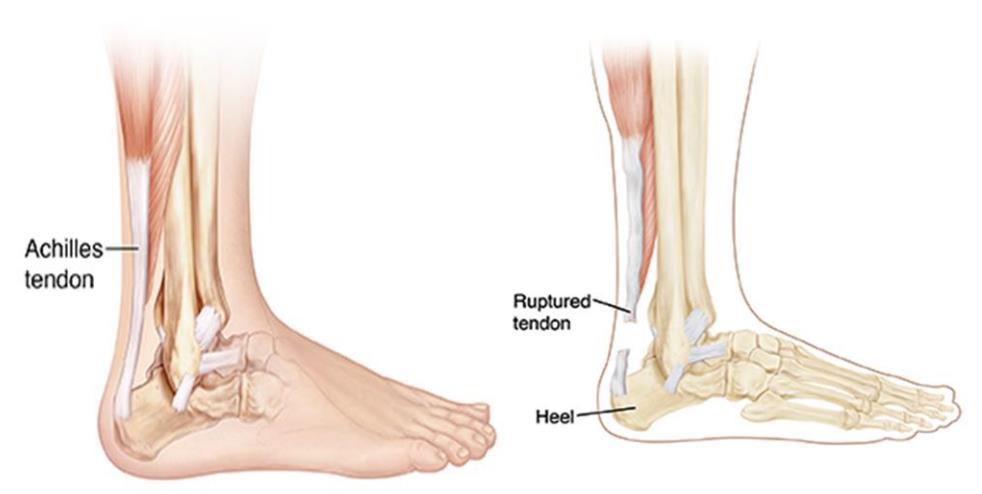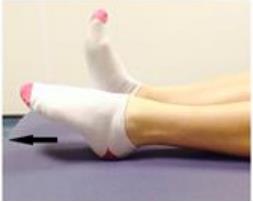Download and print as a PDF (283kB pdf)
On this page
- What is this information about?
- Why Have I been given this information?
- What is an Achilles tendon rupture?
- Must I wear the boot and wedges for all day and at night?
- What do I need to know about walking when I'm wearing my boot?
- Do I need to keep having the blood thinning injections that A&E have shown me how to do?
- Should I stretch my calf (the back part of my lower leg)?
- Do I need to take extra care of the skin of my feet when Iâm wearing the boot?
- Can I drive while Iâm wearing the boot?
- Where can I find further information or advice if I need it after I have read this information?
What is this information about?
This information is about what you should do to help you to recover from your Achilles tendon rupture before the Virtual Fracture Clinic have contacted you.
It includes advice on:
- wearing your boots and wedges
- walking wearing your boot
- your anticoagulant (blood-thinning) injections
- what to do if you are diabetic
- what you should do if you have questions or concerns
Why Have I been given this information?
You have been given this information because we have seen you in A&E and think that you have an Achilles Tendon Rupture. We have referred you to the Virtual Fracture Clinic. They will contact you about further treatment. Until they contact you, following the advice in this information, can help you to heal and prevent your injury from getting worse.
What is an Achilles tendon rupture?
A tear through the tendon is called an Achilles tendon rupture. Your Achilles tendon is most likely to rupture if your foot is suddenly forced upwards or you push off the ground with force.
Achilles tendon ruptures happen most often in people aged 30 to 50 but can happen at any age.

Must I wear the boot and wedges for all day and at night?
Yes, do keep your boot and wedges on all the time until you hear from the Virtual Fracture Clinic. The wedges should sit under your heel.
Be aware
You should remove your boot briefly once a day to wash and change your sock. When your boot is off, keep your toes pointed down as in the picture below:

What do I need to know about walking when I’m wearing my boot?
Make sure you are wearing your boot and wedges. Use your crutches to help you to walk. You can put as much weight as is comfortable for you onto your injured foot.
Do I need to keep having the blood thinning injections that A&E have shown me how to do?
Yes, it is important that you keep having your injections at the same time each day to reduce the chance that you will get a blood clot in your leg called a Deep Vein Thrombosis (DVT).
Should I stretch my calf (the back part of my lower leg)?
No. Do not stretch your calf. This can stretch your tendon as it is healing, and it may re-rupture.
Do I need to take extra care of the skin of my feet when I’m wearing the boot?
Yes, because there may be a higher chance of getting sores on your feet while you are wearing the boot.
Do:
- take your boot off every day and check the sole of your foot for any red or white areas of skin that do not go away when the boot has been off for a few minutes. This may look different in black or brown skin. In these, the colour of the area may look different from the surrounding skin.
- contact the Virtual Fracture Clinic or Plaster Room straight away if you are worried about your skin. You can also contact your GP or phone 111.
Can I drive while I’m wearing the boot?
No.
Where can I find further information or advice if I need it after I have read this information?
Please use the NHS Website www.nhs.uk for general medical information. You can contact the NHS 111 online (111.nhs.uk) or phone (phone: 111) service for information and advice on how to get treatment if you think you may need it.
You can also contact your GP surgery.
There is a walk-in Minor Injuries Unit at Bognor War Memorial Hospital which can help with minor to moderate illnesses and injuries. If you are not sure whether your condition can be treated at the Minor Injuries Unit, please phone 01243 623 563 first to check.
This information is intended for patients receiving care in Worthing and Chichester St.Richard’s hospitals.
The information here is for guidance purposes only and is in no way intended to replace professional clinical advice by a qualified practitioner.